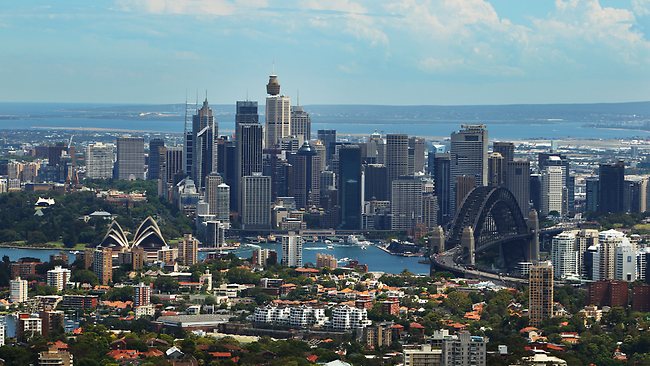Australian Cities – Medium Size Matters
Reading Time: 3 minutes Picture: Brett Costello. Source: The Daily Telegraph via news.com.au
Picture: Brett Costello. Source: The Daily Telegraph via news.com.auOne of the odd things about Australia’s population is that in spite of our relatively large land mass, a majority of our people live in a handful of cities: our largest five cities (Sydney, Melbourne, Brisbane, Perth and Adelaide), each with populations of over 1 million people, hold 60% of Australia’s population. But more significantly, Australia has a paucity of medium sized cities (defined as cities with populations between 400,000 and 1.2m). By that definition Australia has only three medium sized cities (Gold Coast, Newcastle and Canberra).
Medium sized cities can provide their residents modern, knowledge-driven economies. They usually have the civic momentum to provide a significant range of employment, educational, recreational and cultural opportunities. They have very good transport links to other cities. Most importantly they usually have reasonable housing costs. They are markedly more resilient than small cities (with populations between 50,000 and 400,000) which are more open to rapid decline as a result of single economic events.
In the table below I compare the number of large and medium cities (using the above definitions) in the United States, Canada and Australia, and the relationship of those categories to the total population in each country.
| Large Cities | Medium Cities | |||
| No. of cities with population in excess of 1.2m persons | Total pop of large cities as % of total population | No. of cities with populations between 400,000 and 1.2 million persons | Total pop of medium cities as % of total population | |
| Australia | 5 | 60% | 3 | 7% |
| USA | 9 | 7% | 40 | 7% |
| Canada | 3 | 27% | 11 | 27% |
A recent book from the Grattan Institute* highlights the constraints of urban consolidation in Australia. It is well argued to see the solution as better public transport services, more acceptance of the use of public transport and for a large number of us to be content to live in smaller homes. But the structural problems identified above bring into question whether these policies will be sufficient.
A low to medium paid young worker I know who lives in western Sydney is about to get married. She and her partner have purchased a 500 sq m plot of land on the edge of the Sydney Basin that cost them nearly $400,000. By the time they have built a house on this site and installed some rudimentary appliances and furnishings, the cost of their home will be over $750,000, a large part of which will be debt they will have to service. They choose not to live more compactly, they enjoy their access to cars and are happy to forgo other things in order to spend a large part of their income on their housing.
I remain sceptical that enough Australians want to live compactly in dense urban environments; and I think a lot of us are still attracted to doing what it takes to live in larger housing. At some point, however, via some distant economic event, the current housing paradigm will be destabilised and dismantled with profound political and economic implications. This housing paradigm has survived the cycles in previous generations because land in fringe urban settings was largely given away by the Government to encourage settlement.
The system no longer has that economic buffer. If interest rates double at some point in the next decade, what will happen to the owner occupiers or landlords on the edge of major Australian cities?
Australia would be less exposed if we had more medium sized cities, where fringe land giveaways might to easier for Governments to accommodate. There is a strong case for reviewing why we don’t have more medium sized cities and what it would take to create them. The economic and social dynamics of cities are complex but they are a critical part of the workings of our economy.
* City Limits: why Australia’s cities are broken and how we can fix them, by Jane-Frances Kelly and Paul Donegan
